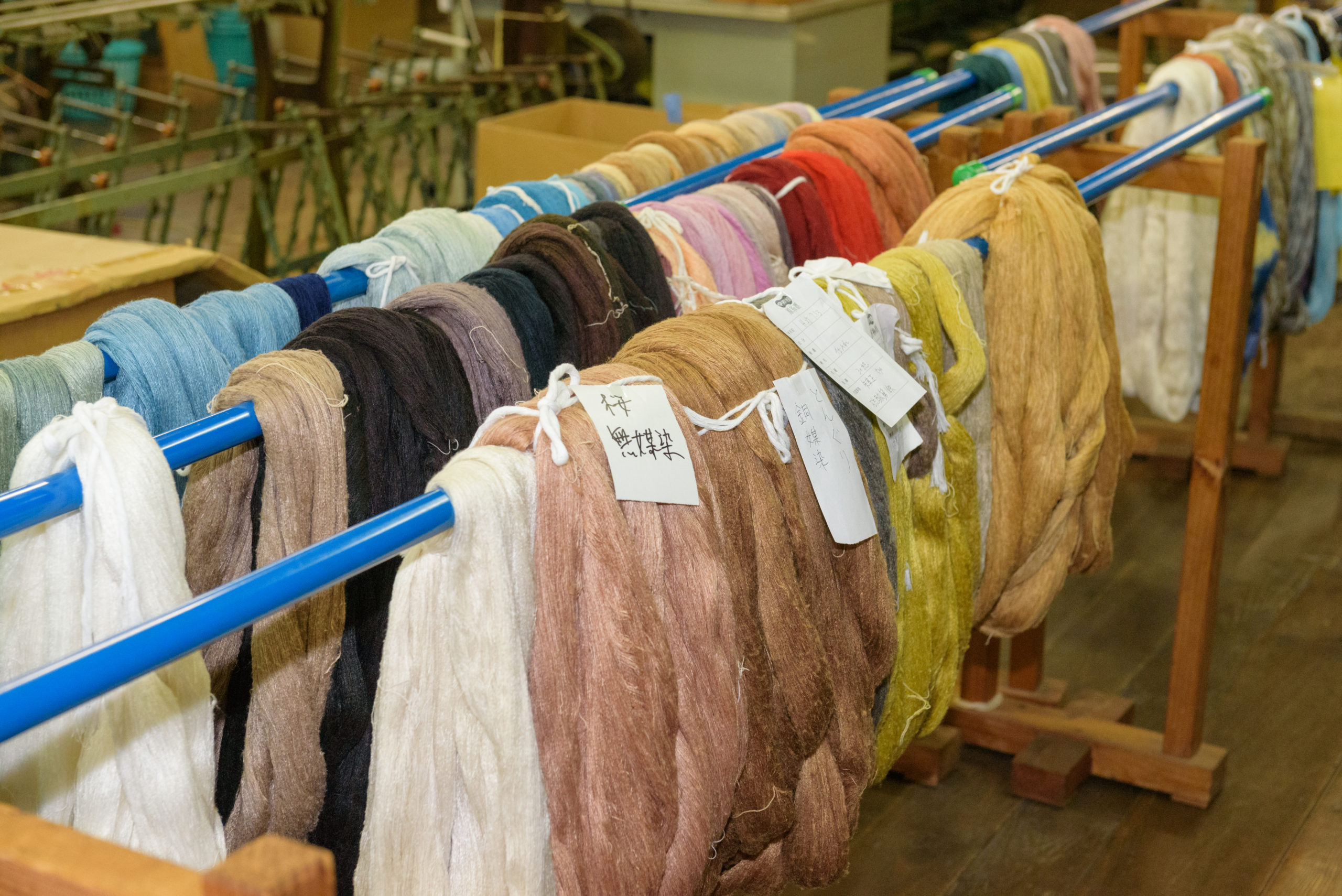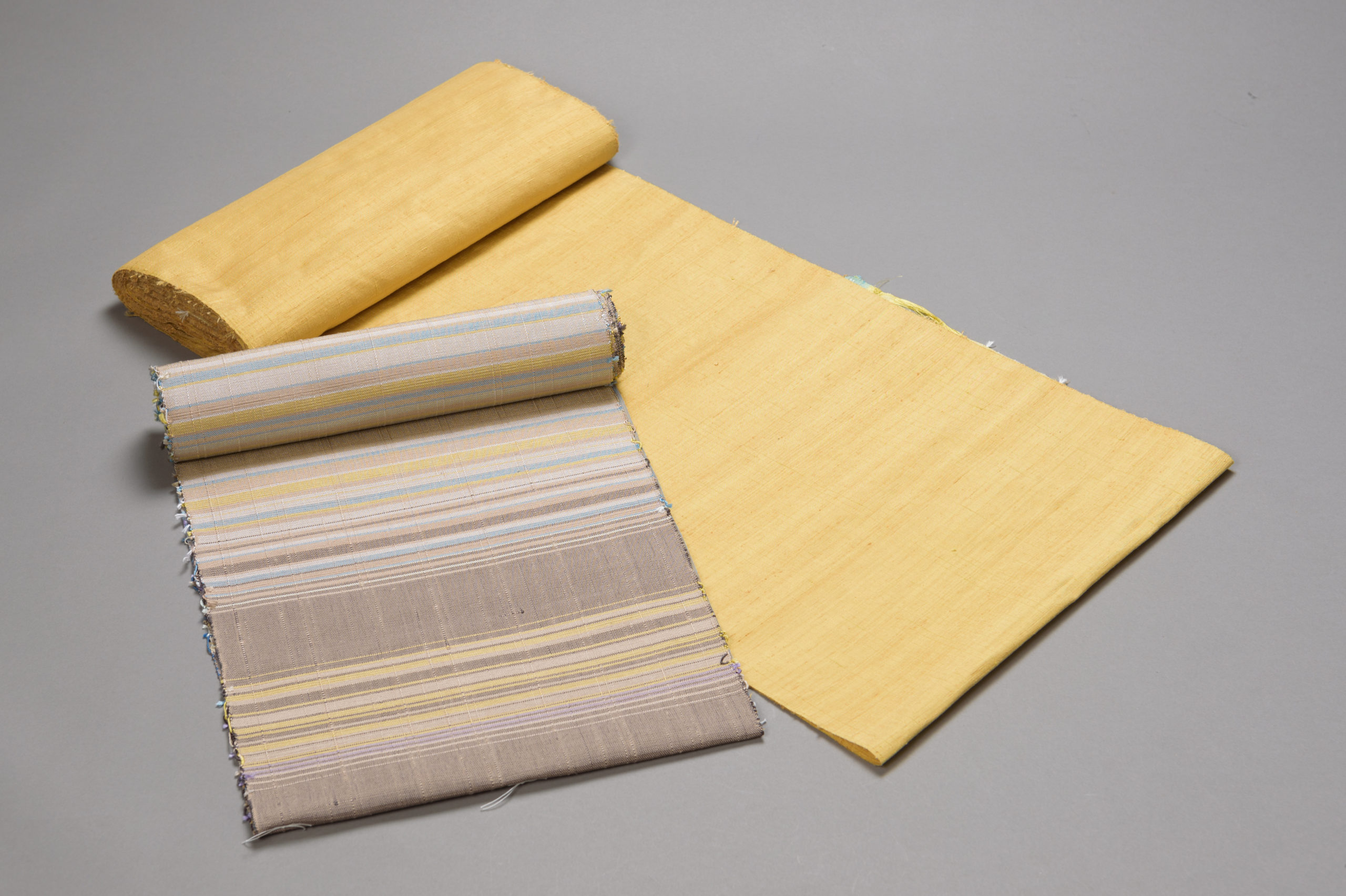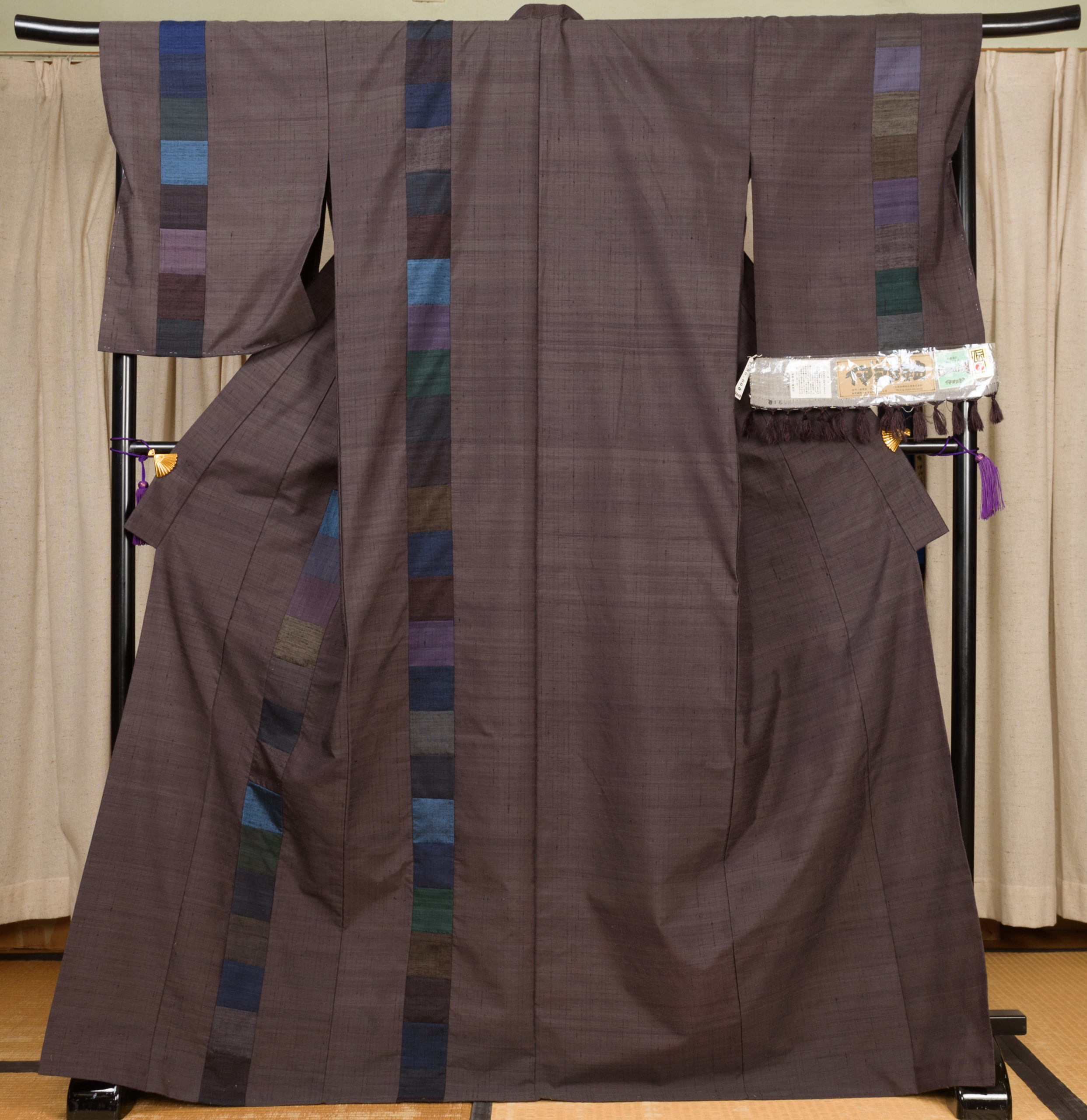信州紬
Pronunciation: Shinshu-tsumugi
Production area: Nagano Prefecture
Shinshu-tsumugi is a collective term for silk textiles produced throughout Nagano Prefecture, known by regional names such as Matsumoto-tsumugi, Ueda-tsumugi, Yamamayu-tsumugi, Iida-tsumugi, and Ina-tsumugi. Characterized by natural plant-based dyes and traditional dyeing techniques, it features subdued luster and rustic tones expressed through stripes, checks, Kasuri (ikat), and plain designs. Nagano has long been called the “land of silkworms” due to its thriving sericulture. The origins of Shinshu-tsumugi trace back to Ashiginu, a silk fabric woven during the Nara period. Woven on traditional handlooms, each bolt carries unique individuality, a hallmark of handweaving. Known for being both lightweight and durable, it includes textiles woven with glossy green silk threads from Yamako (also called “the queen of fibers”), which were said to be so strong that garments could be worn across three generations.
Types of Shinshu-tsumugi
Ueda-tsumugi
A handwoven Tsumugi dyed with plant-based colors, woven from threads spun from waste cocoons that cannot be reeled. Characterized by striped and checked designs, it is supple yet extremely durable.
Matsumoto-tsumugi
A folk-style handwoven textile produced in Azumino. Its variant, Yamamayu Tsumugi, uses glossy green silk from wild silkworm cocoons (Yamako), unique to Matsumoto.
Iida-tsumugi
Produced in Iida City, using natural dyes extracted from local plants, with hand-spun Tsumugi threads woven into rustic, handwoven fabrics.
Ina-tsumugi
Woven in the Ina Valley between the Central and Southern Alps, it is a plant-dyed silk textile with a soft, lightweight texture and gentle hues.



Photo courtesy ofPhoto courtesy of Nagano Prefecture Industrial and Labor Department, Industrial Technology Division



















